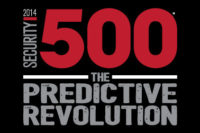
The GVEC is securing its electrical substations with fiber optic cable, fence security, passive infrared sensor and outdoor motion sensor products from Smarter Security Systems.
American public utilities are chartered with providing clean, affordable power to the communities they serve. Yet, because of heightened security requirements and due to the volatility of the current business environment, the need to ensure that utilities and energy industries are secure has increased.
For example:
• In 1965, 1977, and 2003 blackouts in New York City and neighboring areas carried with them incurred costs of up to $10 billion.
• On August 13, 1999, the Downtown Chicago blackout, which shut down about 3,000 businesses in the Loop caused $100 million in estimated economic losses.
The Guadalupe Valley Electric Cooperative (GVEC) in Gonzales, Texas is a member-owned electric distribution cooperative serving the South Central region of Texas since 1939. It spans across 66,000 meters, has 35 substations and approximately 3,500 square miles of territory. It borders San Antonio on the east and serves a very dense population on its western edge.
• In 1965, 1977, and 2003 blackouts in New York City and neighboring areas carried with them incurred costs of up to $10 billion.
• On August 13, 1999, the Downtown Chicago blackout, which shut down about 3,000 businesses in the Loop caused $100 million in estimated economic losses.
The Guadalupe Valley Electric Cooperative (GVEC) in Gonzales, Texas is a member-owned electric distribution cooperative serving the South Central region of Texas since 1939. It spans across 66,000 meters, has 35 substations and approximately 3,500 square miles of territory. It borders San Antonio on the east and serves a very dense population on its western edge.
The GVEC recently opened a new substation to enhance its reliability of service to its steadily increasing member base. As with many utility cooperatives, it had security concerns that it needed to address with the new installation.
According to Bernie Acre, Information Services Division Manager, in the past, GVEC mainly had “malicious vandalism or theft of cooperative property (including copper), but not too much. Neighboring utilities have experienced more theft and vandalism than we have experienced,” he says.
When GVEC opened a new substation last year in a remote area, it used SmarterFence and SmarterBeam from Smarter Security Systems, Ltd. to protect its property from theft and vandalism. The two products comply with NERC reliability standards and protect the GVEC perimeter by sending alarm signals to DVRs for real-time video verification.
Overall, Acre says that he is pleased with the protection that the products provide. We certainly have not had a single break-in since installing the systems at the two substations. We are in the process of ordering signage to forewarn potential intruders that Video and Electronic Surveillance is in use on the premise. We are in the final stages of installing SmarterFence to protect another new substation as well.”
What are the NERC Reliability Standards?
NERC – North American Electric Reliability Corp. – has the mission of ensuring the reliability of the bulk power system in North America. To achieve that, it developed and enforces reliability standards; assesses reliability annually via 10-year and seasonal forecasts; monitors the bulk power system; and educates, trains and certify industry personnel. It coordinates physical and cyber security needs and identifies trends and potential reliability issues. NERC is a self-regulatory organization, subject to oversight by the U.S. Federal Energy Regulatory Commission and governmental authorities in Canada.Among the standards it employs are ones for Critical Infrastructure Protection (CIP), in which the GVAC was installing security technologies to come in compliance. There are nine CIP standards, including a standard titled Cyber Security — Physical Security of Critical Cyber Assets, which ensures the implementation of a physical security program for the protection of Critical Cyber Assets. Specifically for perimeter protection, the CIP-003 Standard requires that a bulk power system has a specific security protection program in place, that it documents all electronic or manual processes for monitoring and logging access at access points to the perimeter and that it prevents unauthorized accesses, among other directives. It also requires use of physical access controls, such as card keys, special locks, security personnel, biometric, keypads or other devices that control physical access, alarm systems, human observation of access points, and logging of physical access.
David N. Cook, vice president and general counsel of NERC, testified late last year before the Subcommittee on Energy and Environment Committee on Energy and Commerce for the U.S. House of Representatives. The hearing was on Protecting the Electric Grid, H.R. 2165, the Bulk Power System Protection Act of 2009 and H.R. 2195.
In his testimony, Cook noted that initial results from the most recent CIP Reliability Standards implementation survey indicate that “more work is needed with industry to ensure that Critical Assets are being appropriately identified as such. He recommended that the Federal government work with NERC to take on more cooperative partnership to current and future physical and cyber security challenges with America’s bulk power system.


